How cutting trees and lighting fires saved Yosemite's oldest giants
A conversation with fire historian and MacArthur Fellow Stephen Pyne, author of "The Pyrocene," about thinning old-growth forests and embracing a new fire aesthetic.
Dear Readers,
This is a long post with large pictures best viewed in a desktop browser by clicking on the main headline above. In addition to once chasing wildfires as a journalist, I am a backcountry skier, cyclist and hiker who has observed forest management practices for several decades across thousands of square miles of dry, fire-dependent forests of Southern Oregon, California, Nevada and Arizona. I acknowledge that cutting trees is a disturbing or painful topic for many, and I invite readers to please open their mind and heart to this information, so that forests can be saved. 🙏 — Amanda
On the edge of the sparkling granite domes of Yosemite National Park, 500 mature giant sequoias nestle in four square miles of primeval forest known as the Mariposa Grove.
These beings are fire-born and fire-dependent. They sprouted only after fire melted the thick, waxy outer coating around their mother sequoia’s cone. Over the millennia, they thrived only because their lowest branches and closest neighbors burned away in low-level blazes until none could carry fire up to their crowns. These giants are 2,000-3,000 years old. Their girth stretches 20 to 26 feet in diameter and they tower up to 286 feet tall. A million visitors a year flock to the southern entrance of Yosemite to bask at the bases of their quiet, ancient trunks.
The trees are so awe-inspiring that, in 1864, President Abraham Lincoln signed legislation to protect the Mariposa Grove, long before anyone conceived of national parks in America.
Three years ago, the Mariposa Grove most certainly would have perished in a wildfire were it not for 60 years of intense forest management that included cutting down tens of thousands of trees and lighting or letting burn hundreds of fires. The work to protect the trees also involved defeating a lawsuit brought by “environmentalists” who accused the park of “logging” near the grove.
The Washburn Fire erupted adjacent to the Mariposa Grove in July 2022. Winds blew flames toward the grove and the fire entered but did not blow up there. It skirted the buffer area that had been thinned and burned repeatedly since the 1960s, sparing the silent giants. Then it incinerated 5,000 acres of forest surrounding the grove that had not received the same targeted care.
Lacking natural fire — both lightning-caused and flames once ignited by humans with the same frequency we now rake our yards — overcrowded trees in the American West compete for dwindling water during drought, become susceptible to beetles,1 and die, providing perfect conditions for an out-of-control conflagration.
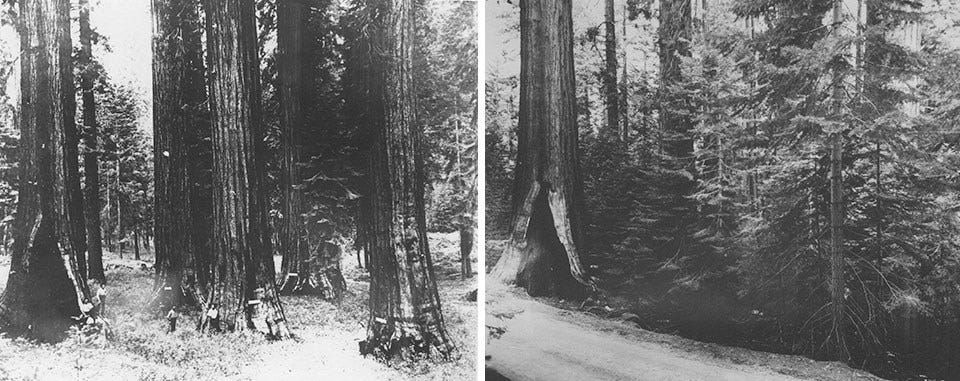
Fire historian and MacArthur Fellow Stephen Pyne provides a full history of the efforts to save the Mariposa Grove in “Pyrocene Park: A Journey into the Fire History of Yosemite National Park.” Pyne dug through archives and interviewed the fire ecologists and land managers who worked to return natural fire to Yosemite, including Bob Barbee, who would later become the superintendent of Yellowstone National Park.
“I went out to the Mariposa Grove and we looked at that and said, ‘There’s no way we can start burning this right now. …’ I mean, it’s a jungle, a jungle.’”
They couldn’t burn the trees, because “the trees are too big and, you know, you could have a holocaust here, kill all the trees.”
So they cut.
“We cut tens of thousands of trees in the Mariposa Grove,” Barbee recollected. … And then when it rained we would burn them.”
— “Pyrocene Park,” page 85
Before the 1960s, the California Conservation Corp and Galen Clark, the grove’s first European caretaker, routinely cut trees in or near the grove, as a way to protect them.
But the thought of cutting down trees is so unpalatable to the modern public that the National Park Service, at a web page titled “Sequoia Research,” censors its own history and mentions only that, in 2000, “a prescribed burn restored the area to its pre-[fire] suppression conditions.”
And herein lies the biggest challenge for wildfire prevention: The sticky endeavor of public relations, of having to market great forest restoration solutions to an unbelieving, often urban, public so they will support legislation that streamlines solutions or, at the very least, reject litigious, ill-informed groups purporting to advance environmental protection.
The Nature Conservancy, which conducts and studies thinning on the vast forest lands it owns in the West, hosts many web pages and graphics devoted to dispelling fear around the practice:
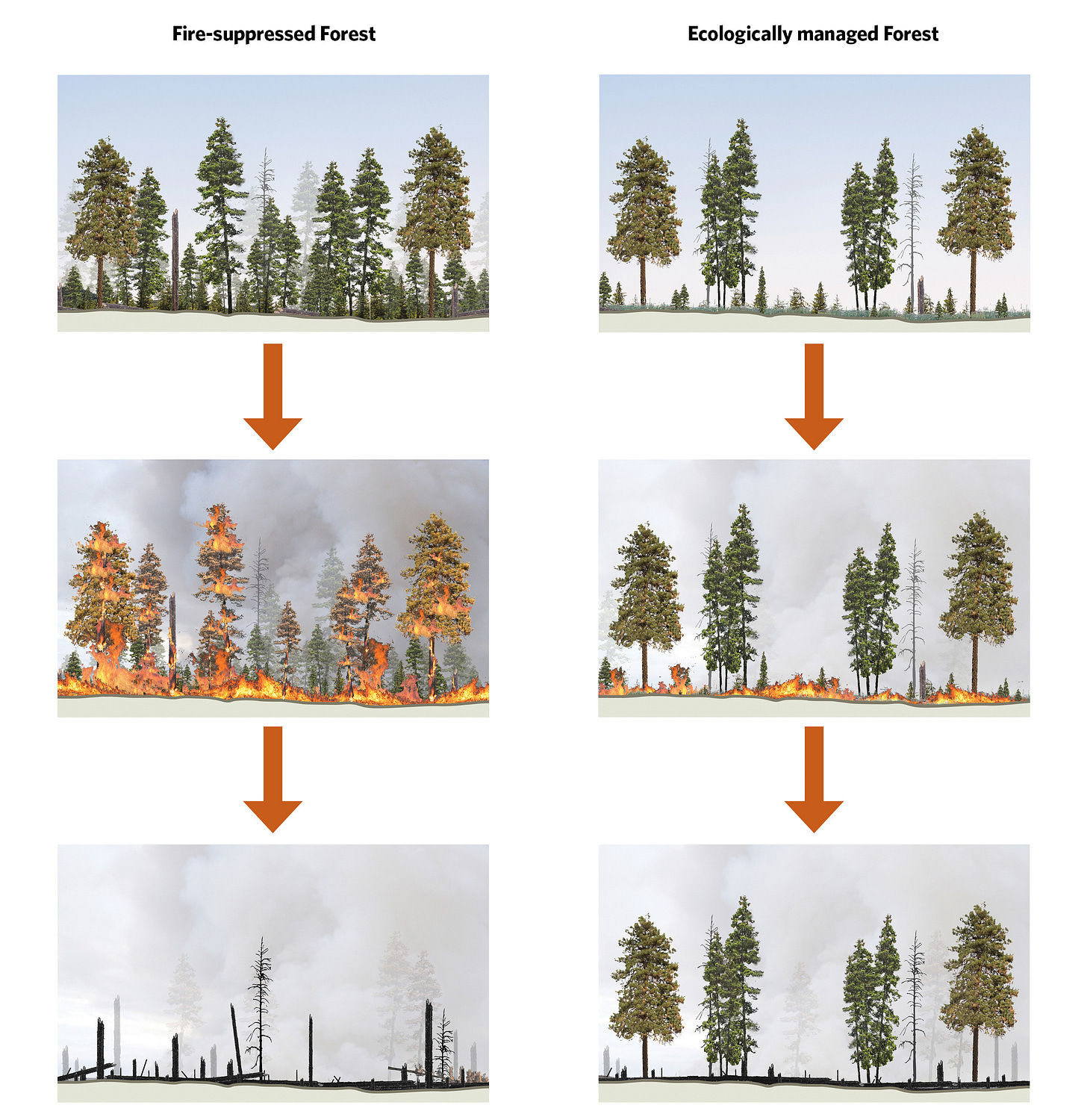
“The cutting makes the burning possible”
Yes, today, the nation’s environmental laws and conservation lands are under assault. Corruption is common and what Pyne calls “silviculture by stealth” — destructive logging that produces no ecological benefit — does take place under the guise of thinning.
But what’s lost among the partisan rhetoric and fearmongering is that there are very legitimate, science-based reasons to cut trees in national parks and other public lands, including old-growth forests. Thinning is an extremely common practice that has proven successful time and again in reducing the heat, force and death toll of a wildfire.
“The point is restoring fire,” Pyne said in a recent email. “The best treatment — both to reduce fuel and to promote ecological integrity — is the right mix of thinning and burning. The cutting makes the burning possible. But burning alone is better than cutting alone — lots of studies in many places demonstrate this.2 Too often, however, the cutting gets done and the burning gets forgotten. This seems particularly true in the Northwest, including northern California. Unless that burning occurs, and continues on a sustained maintenance schedule, the fire situation has not been improved and may be worsened.”
Beneficial fire is being used to reduce flammable forest debris at a faster pace than ever. In 2019, federal agencies lit 150,000 fires, covering 6 million acres, up from a mere 4,300 fires covering 900,000 acres in 1998, according to the National Interagency Fire Center. These low-intensity, intentional blazes must be set during cool, wet conditions to avoid burning out of control and endangering life and property. While the center does not specify which projects were preceded by thinning, it’s a reasonable guess that most were, given the increased safety.
Six million acres a year of beneficial fire may sound like a lot, but consider that the United States is home to 800 million acres of forest, 33 million of which is in California.
More fire and thinning are direly needed — and fast. Climate change and severe drought are knocking on the door. Even fire-evolved forests, home to mature giant sequoias in Sequoia National Park south of Yosemite, are dying in megafires (see video below).
Wildfires — not human-set prescribed fires — burned 9 million acres in 2024 in the United States, up from 1.3 million acres in 1983, again according to the National Interagency Fire Center. Many of these are apocalyptic fires that destroy ecosystems and ruin air quality for months on end.
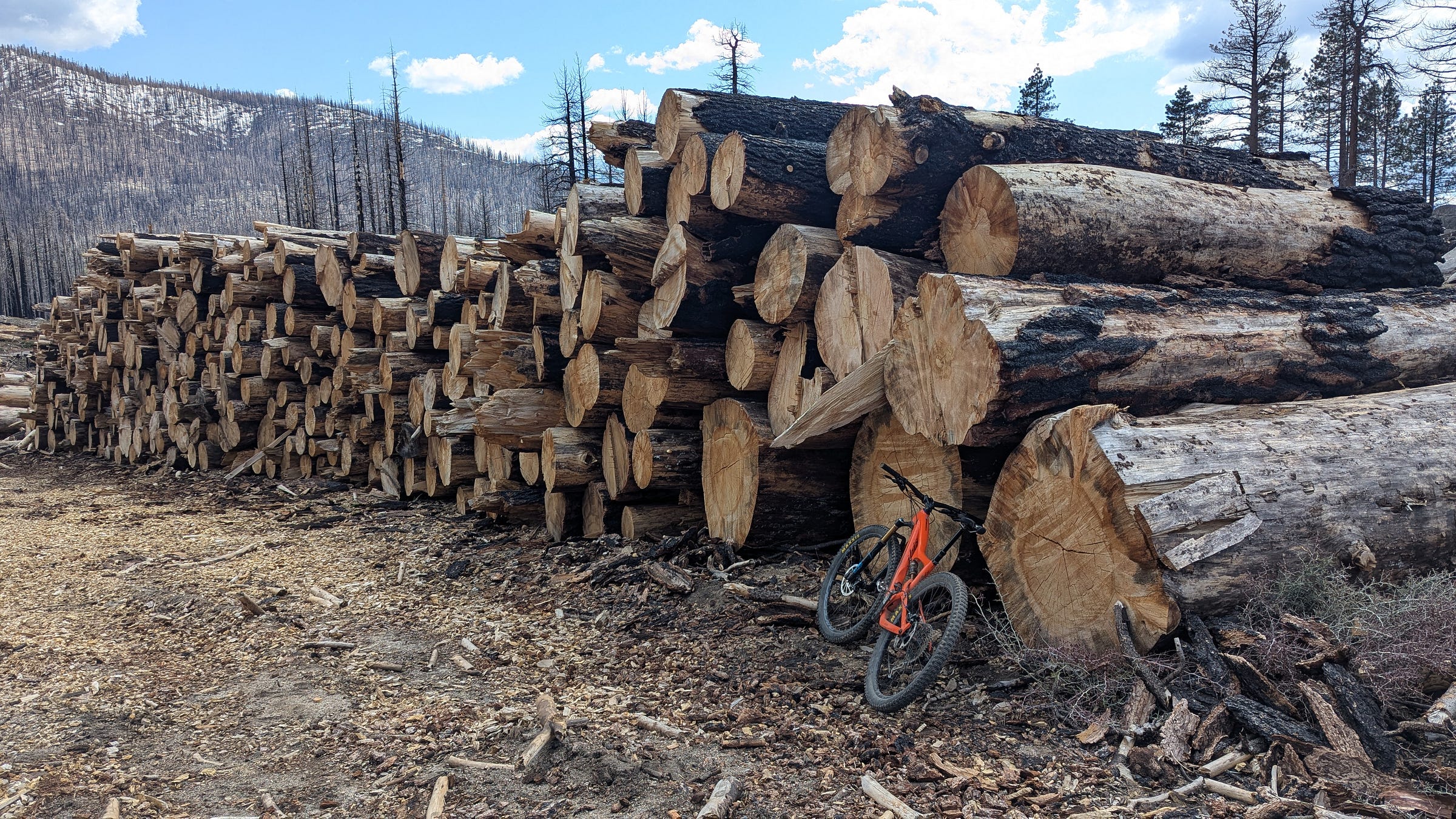
When forests die because of partisan rhetoric, misguided lawsuits and opposition to smart legislation
Today, phrases like “forest management,” “fuels reduction,” “vegetation management” “mechanical thinning” all signify that trees are being cut down to save a forest. The trees that are cut are usually limited to a maximum diameter, say 20 inches, specific to that site, but could be up to 130 years old, dating back to when fire exclusion initiated.
And though the science proves these projects work when followed up with fire, land managers frequently face lawsuits accusing them of commercial logging. Such lawsuits fail 80 percent of the time. The environment suffers from the delay caused by the litigation; the only winners are the fundraisers and lawyers earning their keep from well-meaning donors, all of whom live in wooden houses and sit on wooden furniture.
The lawsuit to stop the thinning work around the Mariposa Grove was brought by debunked “scientist” and career litigant Chad Hanson and his John Muir Project, which is funded by the Earth Island Institute.
Pyne was completing his draft of “Pyrocene Park,” when he ventured to Yosemite to survey its thinning work and meet with the park’s good fire cheerleaders. On the same day, the Washburn fire erupted and Hanson shot another volley in the lawsuit.
“It was Orwellian,” Pyne said to me in a recent conversation. Behind him, a wildfire had exploded and, before him, a typical wildfire prevention strategy had hit the ground in the nick of time, while science-denying radicals filed lawsuits to save relatively young trees that never would have survived had we not suppressed fire for so long.
“I thought, ‘This is really crazy. Are we willing to split the baby?’” Pyne lamented.
Pyne is a professor emeritus at Arizona State University, former firefighter and author of several dozen books on fire.
“I regard the groves as cultural monuments and worth removing surrounding trees, some now grown large, that exist only because of fire’s suppression,” Pyne said.
Unfortunately, any random person, with or without forest, fire or science experience, can file a lawsuit to attempt to stop such work. They decry the supposed risk to endangered species, water and air quality. Meanwhile, high-intensity megafires destroy all these in their wake by the millions of acres per year.
The clock is ticking and yet, the work is becoming no easier to do. Fire science, thinning and burning took off in the 1960s. But the environmental laws of the 1970s, like the Clean Water Act, Clean Air Act and Endangered Species Act, don’t treat fire as a preexisting condition. The resulting delay and obstruction of wildfire prevention work produces a perverse outcome: damage to the environment rather than environmental protection.
Case in point: Though fire is necessary for healthy ecosystems in the American West, an air quality regulator can’t approve a prescribed fire if air quality is poor the day it was planned. Years can pass as firefighters wait for a perfect day to light prescribed fire with signoff from regulators who are bound to follow their governing laws. When wildfires erupt, of course, they respect no such boundaries.
To stop this self-inflicted spiral of damage, the State of California recently acknowledged the unceded rights of Native American tribes to conduct good fire3 without encumbrances from such laws. In addition, the bipartisan Fix Our Forests Act winding through the U.S. Senate expands the acreage that can be exempted from environmental laws (categorical exclusions) from 3,000-5,000 acres to 10,000. These are extremely small amounts, considering that 9 million acres burned in this country last year, to the detriment of air, water and endangered species habitat.
The cookie cutter op-eds opposing Fix Our Forests all fail to acknowlege the most recent scientific conclusions that thinning and prescribed fire reduce wildfire severity. They say “harden the homes” to protect communities but fail to propose solutions that will save forests. They say, “let nature take its course,” a callous approach to air, water and wildlife habitat when viable solutions are available to protect these.
Case in point: South Lake Tahoe survived the Caldor Fire of 2021 — not one home burned — because residents created defensible space around their homes and forest thinning had been conducted around neighborhoods for decades4 (see pictures below). But for generations to come, the town will live with a 50-mile-long fire scar that torched beloved trails, a ski resort and old-growth trees. Children went to school breathing toxic, 650 ppm air for months during this catastrophic megafire. Caldor started in a community in the foothills, on the other side of granite-peaked mountains, where 600 homes unfortunately did burn and where a U.S. Forest Service fuels reduction project had been delayed by 10 years by “regulatory burdens” (those are environmental laws) and funding shortfalls. The thinning portion of the project would have cost $1.3 million,5 while the prescribed fire portion would have cost $4 million. Meanwhile, the Caldor Fire’s economic damages totalled $93 million.6
Speaking of the U.S. Forest Service, public land managers are stuck between a rock and hard place, employing the most experienced forest and fire scientists7 in the nation who know what’s effective to prevent wildfire, while constantly battling a sentimental public that can’t stand to see one tree, grown “big” and “old” during fire suppression, taken out. Misinformation and distrust of public land agencies are causing stalemates.
A common source of misinformation is the anti-thinning camp led by Hanson, whose group sued but failed to stop Yosemite’s continued wildfire prevention efforts. (I think of these people as the anti-vaxxers of the fire ecology world, for their refusal to accept mountains of peer-reviewed science.)
Pyne, who has met and shared a stage with Hanson, is not a fan.
“They filed that suit at the same time the thinning work was saving the Mariposa Grove,” Pyne said. “He’s a Ralph Nader. He’s got basically one story that traumatized him when he was young,8 and that’s it, and the world is determined through that prism.”
Hanson’s main claim, which is unfortunately irresponsibly repeated by lazy legacy media reporting, is that thinning worsens wildfire, when the opposite is true.9 Hanson’s science was debunked in a paper most recently summarized in a 2023 High Country News article titled “Does thinning work for wildfire prevention?” that chewed him up and spit him out:
The vast majority of scientists approve of thinning, though a quick Google search may seem to show otherwise. Chad Hanson, director of the John Muir Project, is thinning’s most vocal opponent. His opinions have appeared in dozens of news clips, reports, letters to Congress, lawsuits, op-eds, webinars, books and interviews. In 2019, Jones co-authored a paper criticizing Hanson’s methods and conflicts of interest in the journal Frontiers in Ecology and the Environment.
Jones argued Hanson and his coauthors were guilty of unscientific practices, including “mixing science and litigation without disclosing potential conflicts of interest,” “pressuring scientists and graduate students with different research findings to retract their papers,” and “selectively using data that support their agendas.”
So often, contrarians get ink. But it doesn’t make them right.
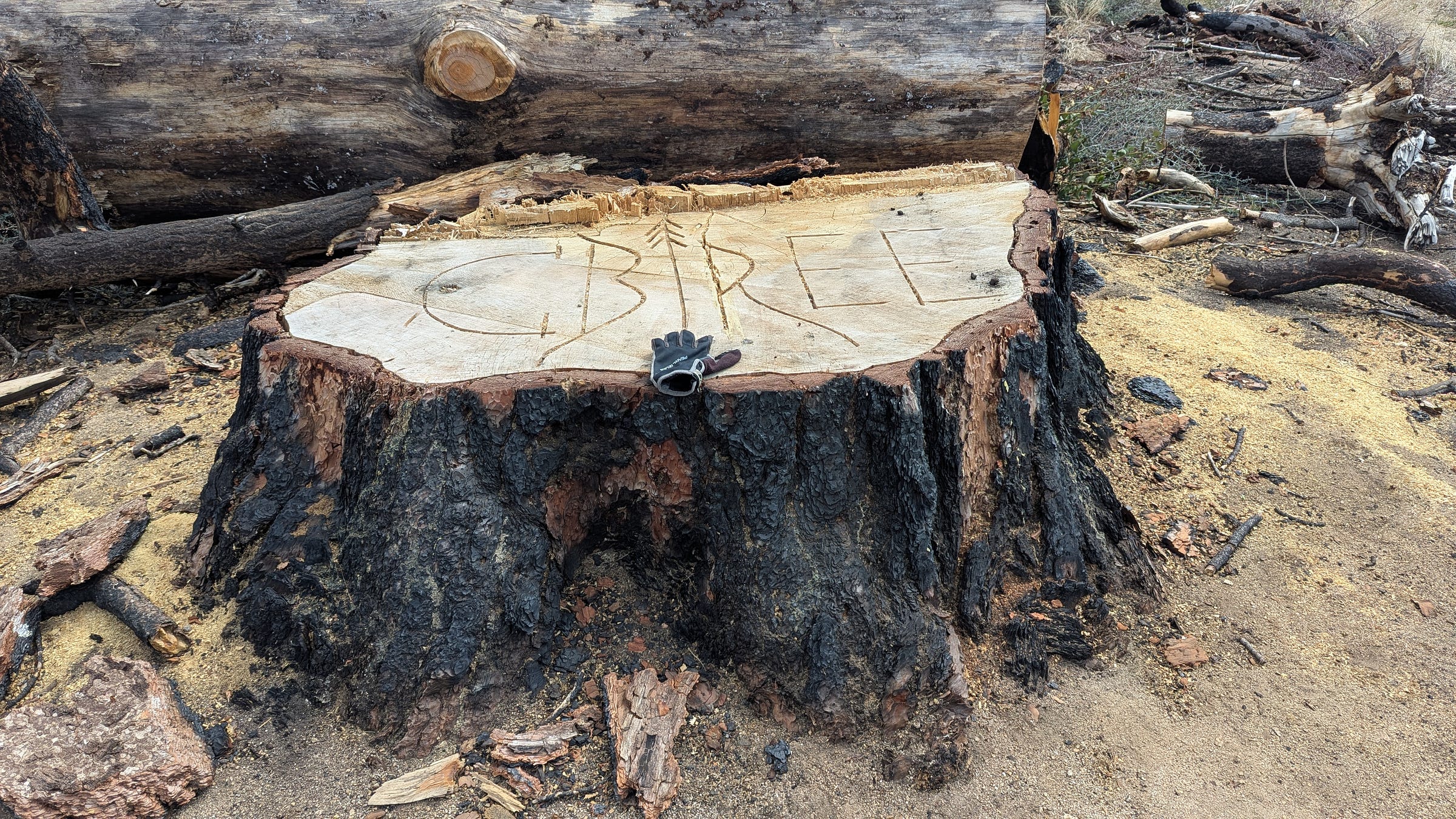
“The absolute prevention of fires in these mountains will eventually lead to disastrous results.”
Even 150 years ago, the first white land managers of Yosemite, many appointed by the U.S. Army, noticed the quick buildup of flammable forest debris within a few short years after Native Americans — the Miwok and Ahwahneechee — were expelled from the land. Galen Clark, the first European to love and advocate for the Mariposa Grove, described a Yosemite with vast open spaces and vistas due to frequent burning. When he visited 50 years later, he lamented that everything was severely overgrown.
Soon after European settlement, anyone who set fires, including shepherds and Indians, were deemed arsonists. Yet, up to then, fires had occurred so regularly, whether ignited by man or lightning, that there was barely anything to burn on the forest floor. Many observers noted these small, frequent fires were “harmless.”
The new, white managers ignored their own observations and the advice of “mountain men” to keep fire on the landscape, Pyne writes in “Pyrocene Park.”
1891: During the tenure of Captain Abram E. Wood:
Officers found it was nearly impossible to find trees without scorch marks, so endemic was fire, as pervasive as winter snow or summer sun.”
— “Pyrocene Park,” Page 18
1894: Captain G.H.G Gale noted that the fires burned light, swept away pine needles, and did little to harm the forest: “The absolute prevention of fires in these mountains will eventually lead to disastrous results.” (page 20)
1898: Yosemite Superintendent J.W. Zevely (page 22)
“Fire occurred almost every year in all parts of the forest — in fact, they were frequently set by the Indians, but there was so little accumulation on the ground that they were in great measure harmless.”
“The trees have in no wise been seriously affected by these burnings.”
1907: Forest superintendent Charles Shinn, (page 24)
Believed fire was the “enemy of the forest” despite hearing from “Every one, without exception … that fires did no harm at all; but rather did good.”
In order to preserve every last tree, and out of misplaced fear that any fire would hurt the old trees, the fire suppression mandate grew more powerful in Yosemite. Debates continued for decades about whether fire was friend or foe, until finally, in the 1960s, beneficial fire won.
The endangered species conundrum
Yosemite’s fire program, with extensive thinning plus frequent, small burns, eventually became a model for the nation. But obstacles like liability concerns and regulations mean it’s hard to ramp up efforts to put fire on the ground at the level it’s direly needed. Under current laws, since fire is not a preexisting condition, but a “new” project, it must be analyzed with the same attention as a new subdivision, road or mine, adding delay and expense (unless it’s small enough to qualify for a categorical exclusion, mentioned above).
During Pyne’s brief visit with Yosemite’s fire officials in 2022, one park fire ecologist fretted that the recent listing of the Pacific fisher, a member of the weasel family, as federally endangered10 would delay fire plans:
“Since it dens in the spring, this could affect any version of fire during that season. … There are workarounds possible without shutting down all spring burns or rewriting the 2005 fire plan. But it is yet one more constraint on a program that struggles to let natural ignitions evolve and expire on their own, let alone factor in the historic burning from people.”
— Pyrocene Park, page 127
What’s worse for endangered species: Total habitat annihilation due to a megafire that results from long-term fire exclusion; or some smoke during a small springtime prescribed fire? Megafires are environmental catastrophes that poison air, water quality and wildlife habitat by the millions of acres each year. The answer is obvious, yet our nonsensical policies make it vastly easier to follow the fire exclusion/megafire annihilation route.
“We are in a fire age, and it’s maturing”
Before the 2010s, a fire was large if it grew to 3,000-5,000 acres. Now, one fire can last half a year and burn 500,000 acres. Fifteen of California’s 20 largest fires have occurred in the past decade, burning millions of acres.
“We are in a fire age, and it’s maturing,” Pyne said. “It’s quickened and acquired more intensity. We are remaking the world; we are making a fire age. You already feel it, even if you don’t see flames or breathe the smoke. The places that are burned are not going to come back the way they used to. We have a no-analogue future. Take all the features of an ice age, mass extinctions, ecological change, and you pass it through a kind of pyric looking glass, and that’s the age we’re living through.”
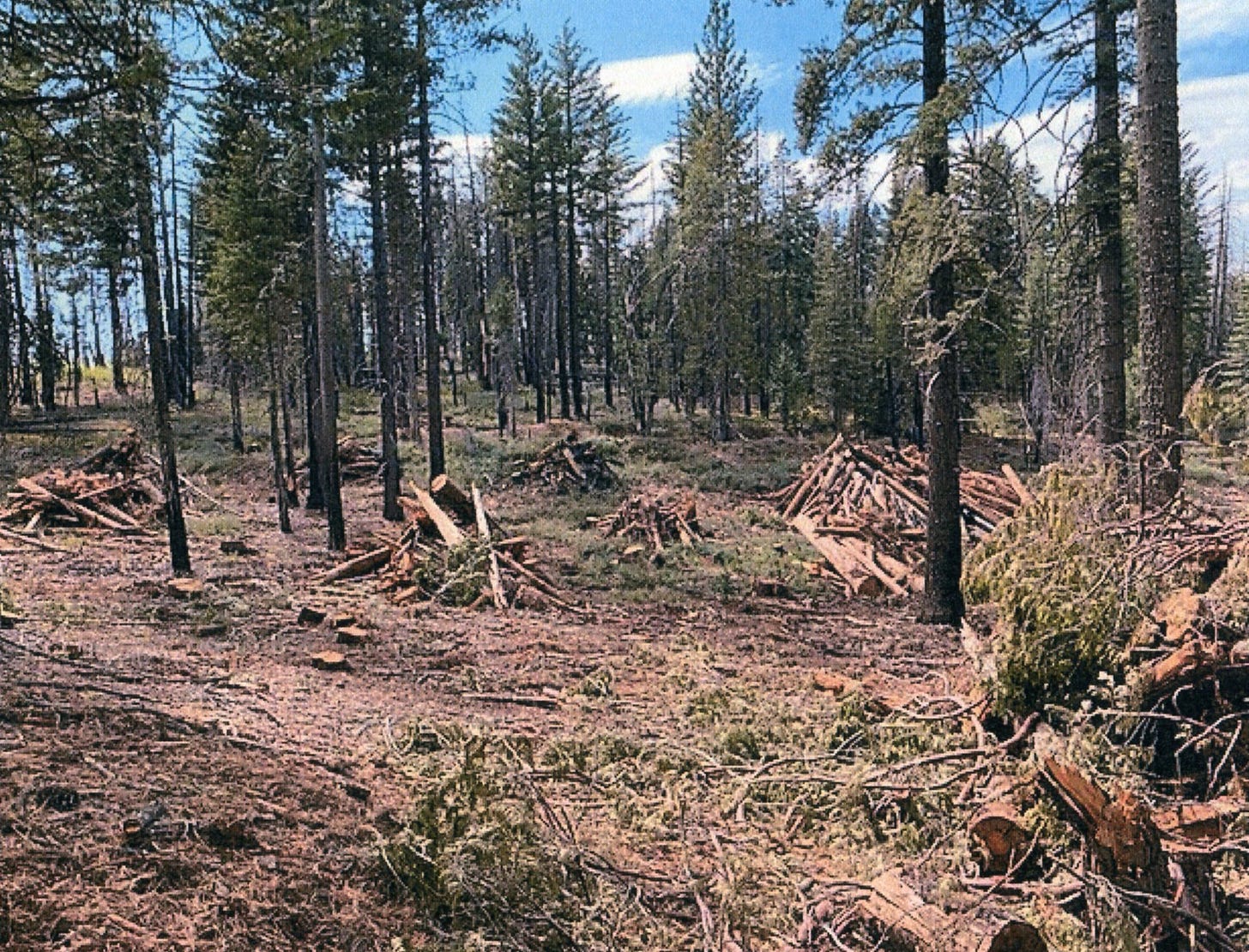
Fortunately, many thinning and prescribed fire projects do make it through the tangled morass of regulations and lawsuits. Wildfires frequently skirt pre-burned and thinned areas or simmer down to a controllable “harmless” creeping flame. Yet, wildfire prevention efforts, because some trees have to die, continue to be the subject of inflammatory fear-mongering and accusations that “they want to log your national park.”
“The problem is not that we don’t have information, but we can’t agree on the legitimacy of the information,” Pyne said. “Fire just gets hijacked for whatever cause or discipline it serves. What we need is to turn around and see what we can do collectively; that is what doesn’t seem to be possible now.”
Much anti-logging sentiment in the U.S. comes from the legacy of the 1980s “timber wars” in the Pacific Northwest, a region where logging interests and “forest protectors” are still clashing. Those sentiments, however legitimate, could be preventing good work from happening elsewhere, where thinning is needed to catch up with decades of fire suppression.
“The bitterness between those two groups [logging interests and forest protectors] is so deep; I resent having that projected over the rest of the country, and having everyone else caught up in that vendetta,” Pyne said to me. “Can’t we separate this stuff out?
“We don’t have a fire problem in the U.S., we have lots of fire problems, and they all have different solutions. Partisans want to use the power of those [wildfire] visuals to promote their own cause and we seem to be unable to disentangle from all that. Fire is a shapeshifter; it’s so different everywhere. They all require different solutions, but all those solutions need fire.”
From fire evolved to fire dumb
Pyne is also author of the 2021 essay “The Pyrocene: How we created an age of fire and what we can do about it,” a mind-shattering book positing that, since the end of the last ice age, the Earth has been transforming during an age of fire leveraged and shaped by humans, an age that has only become more complicated as we burn fossil fuels. It’s a short and easy read that will deepen anyone’s understanding of fire’s role on this planet.
Pyne’s “The Pyrocene,” points out that — though humans co-evolved with fire, not just cooking meat, but burning landscapes to clear way for hunting wildlife, conducting agriculture and grazing, firing clay for cookware, forging metal for tools and weapons, and burning gasoline to fuel our current economic regime — we are currently intensely uncomfortable with fire. We no longer light fires daily. We no longer associate fire with cooking food, sharing stories, or enhancing forests and prairies. The ashes, char and death left behind by a fire bring us feelings of devastation, grief and regret. Headlines about fire refer to “rage” and hellish “infernos,” when many other types of fire exist.
“The Pyrocene” points out that, though we are living through a wildfire crisis, fire ecology is still not a subject taught at most universities. Though we evolved with and because of our use of fire, we have been systematically removing it from our culture. Most people today could not start a fire on their own, though most humans in history could not have survived a few days without that skill.
As a result, we are quite fire dumb. And even when there is good fire science, it’s supplanted by a culture and media atmosphere that demonizes fire and only gives it attention when it’s destroying forests and towns.
In fact, fire is friend, foe and savior.
Adopting a new fire aesthetic
Pyne and I share a common experience: We both have lived in communities that were spared by a wildfire but where, unfortunately, the surrounding forest burned.
When we spoke, I shared the constant heartbreak I feel when I look at my dead tree “friends,” the charred sticks and stumps that are left of the forest that I skied, biked and walked through for many decades. When I counted their rings, they added up to 350 years old. These old sugar and Jeffrey pines survived dozens, if not hundreds, of fires, before the Caldor Fire took them out.
Wildfire and I go way back. I reported on wildfires for The Associated Press, work for which I once earned an award. I chased wildfires. Then, because wildfire is everywhere every year in California, I’ve escaped several wildfires. The closest call was the Santa Rosa fire of 2017. The inn where my family and I were sleeping burned within a half hour of our evacuating.
Among all the wildfires I’ve chased and escaped, the Caldor Fire keeps burning me. I perpetually grieve. I shed tears suddenly, without notice. When I see the black shards of dead trees left behind, the stumps left behind by salvage logging, what I see is skeletons, constant reminders that no one paid enough attention to save them.
We need to reeducate ourselves, Pyne said, create a new aesthetic, one that values the role that fire plays in a resilient forest. When he toured the “severely thinned” forests around Yosemite’s groves of old sequoias, he saw it as a chance to embrace a new aesthetic.
“Some people might say, ‘Look at this: the forest is really chewed up; there are dead, standing trees.’ They would want to see this unblemished, dark woods, forest primeval kind of thing. You have to re-educate yourself. We do need to create an aesthetic to replace that.
“Some of these landscapes are very resilient, but very different. Suppose I took my grandkids here. They would not see the loss; they would see the beauty. We have an obligation to let them find that for themselves. This is what needs to exist if we want to have the forests survive fire.”
His words remind me that, at first, I only saw the 200,000 acres of burn scar from the Caldor Fire. Since then, I have begun to notice within the devastation the little rivulets of green among the blackened land, the trees that survived. I know that they are the old-growth trees of the future, made stronger by fire.
“Suppose I took my grandkids here. They would not see the loss; they would see the beauty. We have an obligation to let them find that for themselves. This is what needs to exist if we want to have the forests survive fire.”
— Stephen Pyne, author of “The Pyrocene”
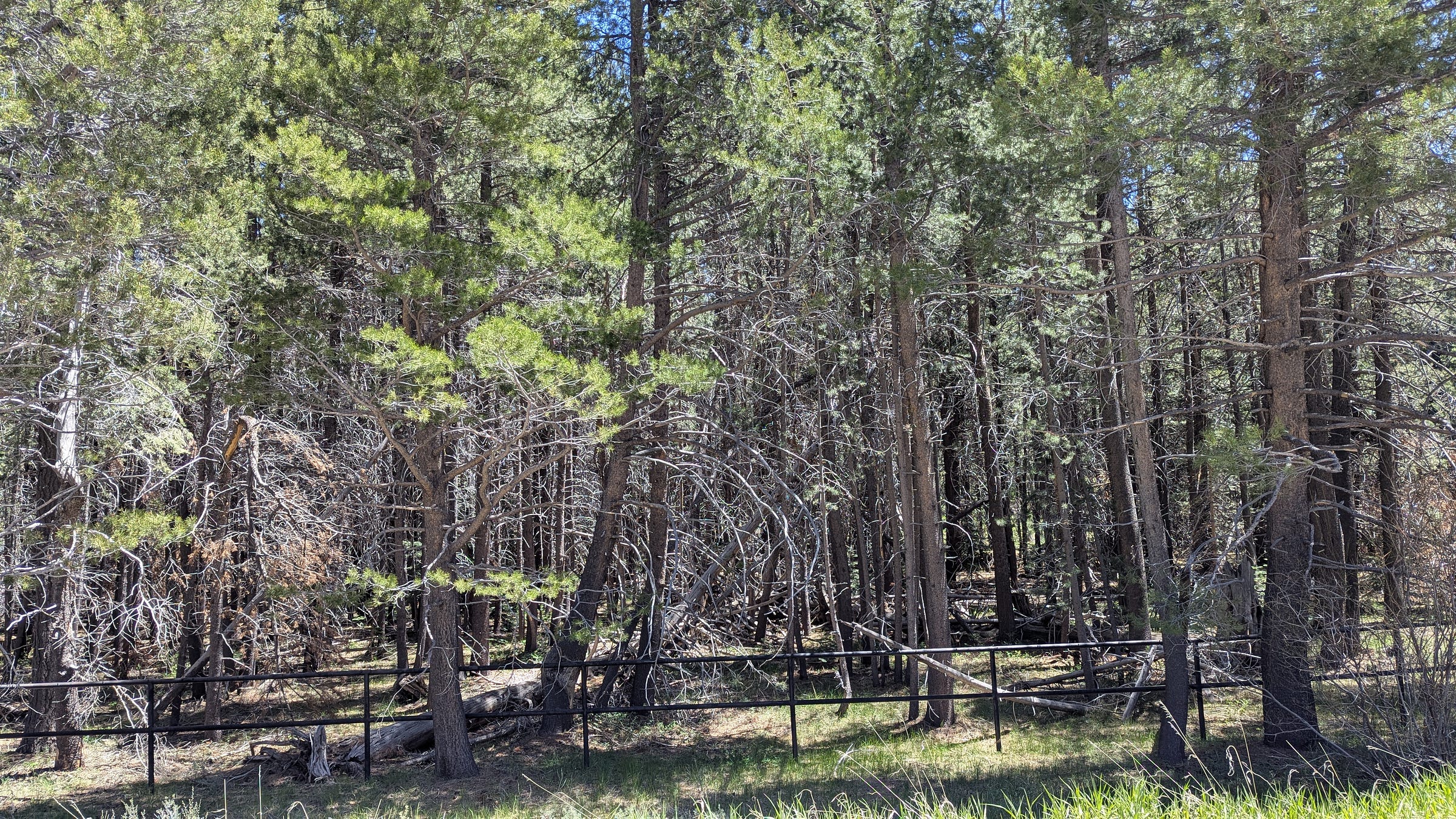
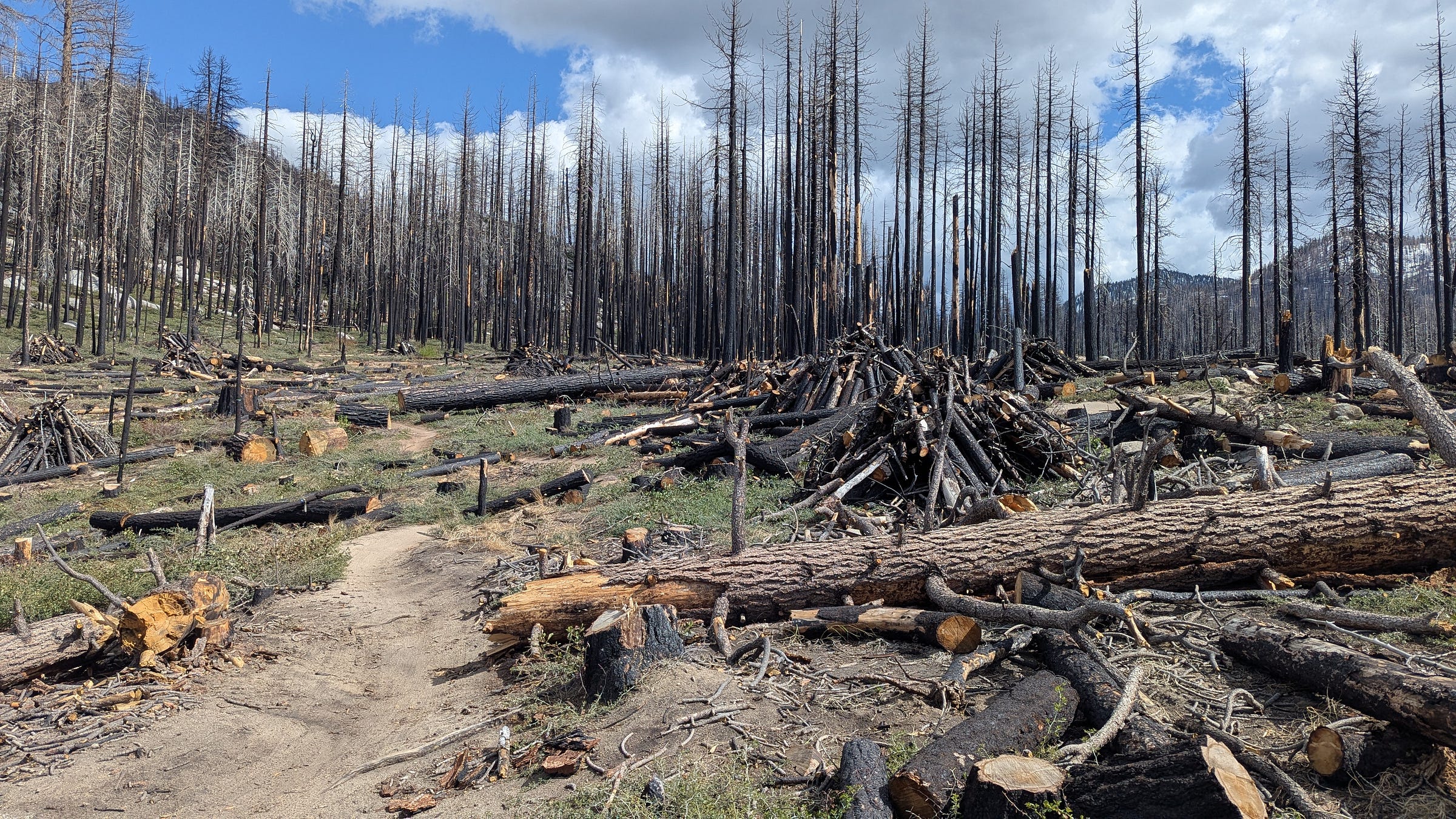
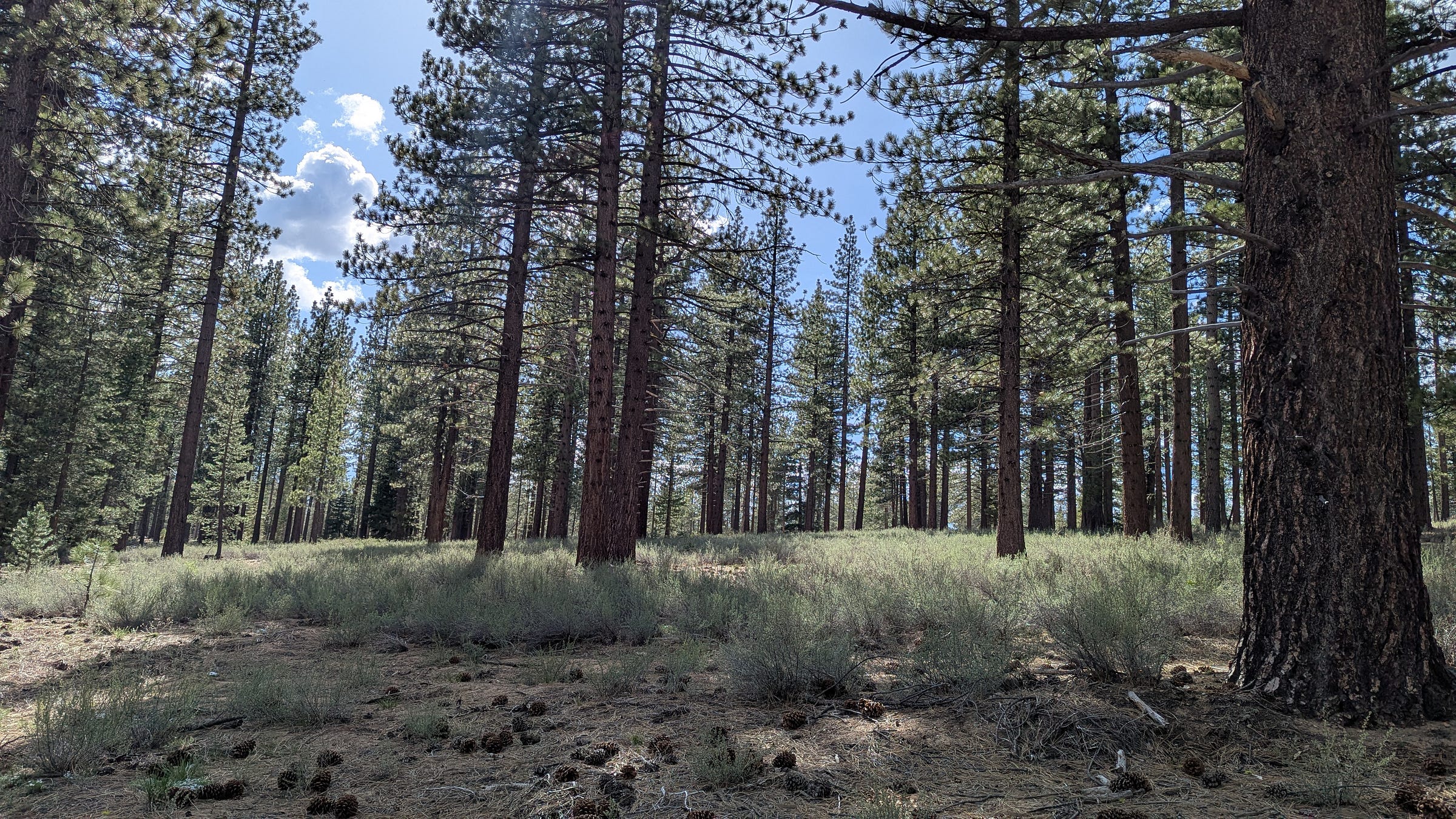
Further reading:
Fire Ecology: How forest management changed the course of the Washburn fire and the fate of Yosemite’s giant sequoias
NPR: Decades of 'good fires' save Yosemite's iconic grove of ancient sequoia trees
Tahoe Daily Tribune: Burning Question: How to save an old-growth forest in Tahoe
The Nature Conservancy: Let’s fight fire with fire
“Pyrocene Park: A Journey into the Fire History of Yosemite,” by Stephen J. Pyne
“The Pyrocene: How We Created an Age of Fire and What Happens Next,” by Stephen J. Pyne.
Earth Hope did not receive compensation of any kind to discuss these two books.
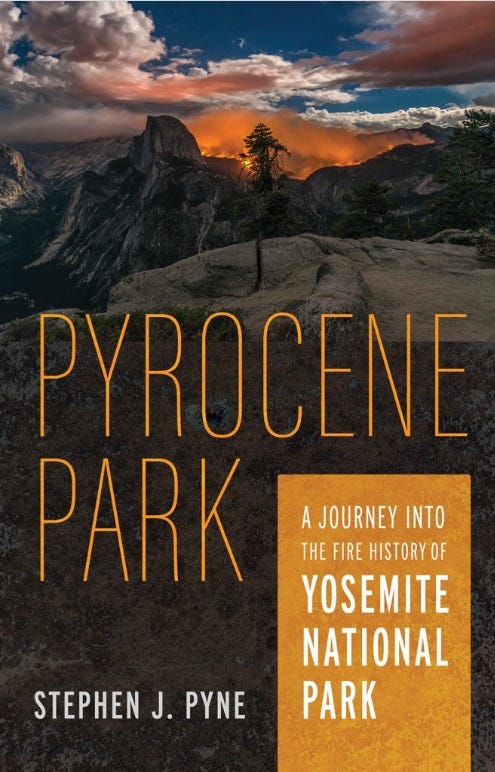
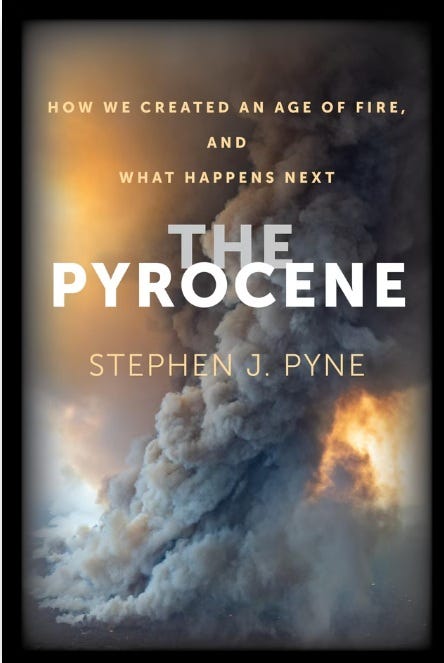
About Earth Hope:
Earth Hope is a solutions-based journalism project that highlights environmental success stories to inspire action. I’m Amanda Royal, a former newspaper reporter and current eco-news junkie. Read more about this project and what inspired it.
Visit earthhope.substack.com for more stories. Visit my Services page if you’re a writer who’d like some help figuring out Substack.
Bark beetles are a naturally occuring pest in North America. Healthy trees can fend them off. Drought-stricken trees succumb.
Forest Ecology and Management, Tamm review (a study of studies): A meta-analysis of thinning, prescribed fire, and wildfire effects on subsequent wildfire severity in conifer dominated forests of the Western US. “We found overwhelming evidence that mechanical thinning with prescribed burning, mechanical thinning with pile burning, and prescribed burning only are effective at reducing subsequent wildfire severity, resulting in reductions in severity between 62% and 72% relative to untreated areas.”
Tribal sovereignty doctrine allowed this to happen. Unfortunately, it’s much more complicated for the state to give itself such exceptions on its own or private land.
I am not aware of any anti-thinning lawsuits originating from this town, likely because the residents know the forests very well and see successful thinning and burning projects all the time.
Here’s where the commercial logging accusation comes into play. Thinned timber sometimes has value. If nothing else, it goes to a biomass plant (much better for air quality than open air burning). The value of the timber at this project would have reduced the thinning costs by $800,000. My suspician is that this is the true source of the science denial in the anti-thinning camp or among the opponents of Fix Our Forests: they are deeply uncomfortable with any sort of commerce happening in these situations. A timber company conveniently has all the right equipment to conduct thinning projects. Still, the project could not completely pay for itself and the Forest Service didn’t round up the funds in time to save the town of Grizzly Flats.
It’s interesting that the same people who claimed to grieve for these people when they were getting fired don’t trust them when they say cutting out trees keeps a forest safe.
He saw some clearcutting on public land while hiking the Pacific Crest Trail.
Another study published in Fire Ecology in 2024 reaffirmed that thinning produces overall benefits for reducing wildfire severity:
"While reducing stand density can lead to greater surface fuel drying (Kane 2021; Whitehead et al. 2006) and higher surface wind speeds (Bigelow & North 2012; Russell et al. 2018), our data provide clear evidence that the suppressing effect of crown fuel reduction far outweighed any enhancing effect of increased drying or higher windspeeds on fire behavior."
Crown fuel reduction = Reducing the the number of trees, “crown” being the top of the tree.
In the Southern Sierra only.


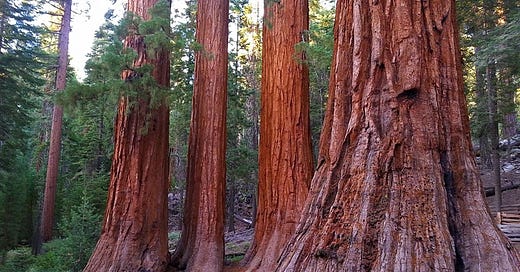



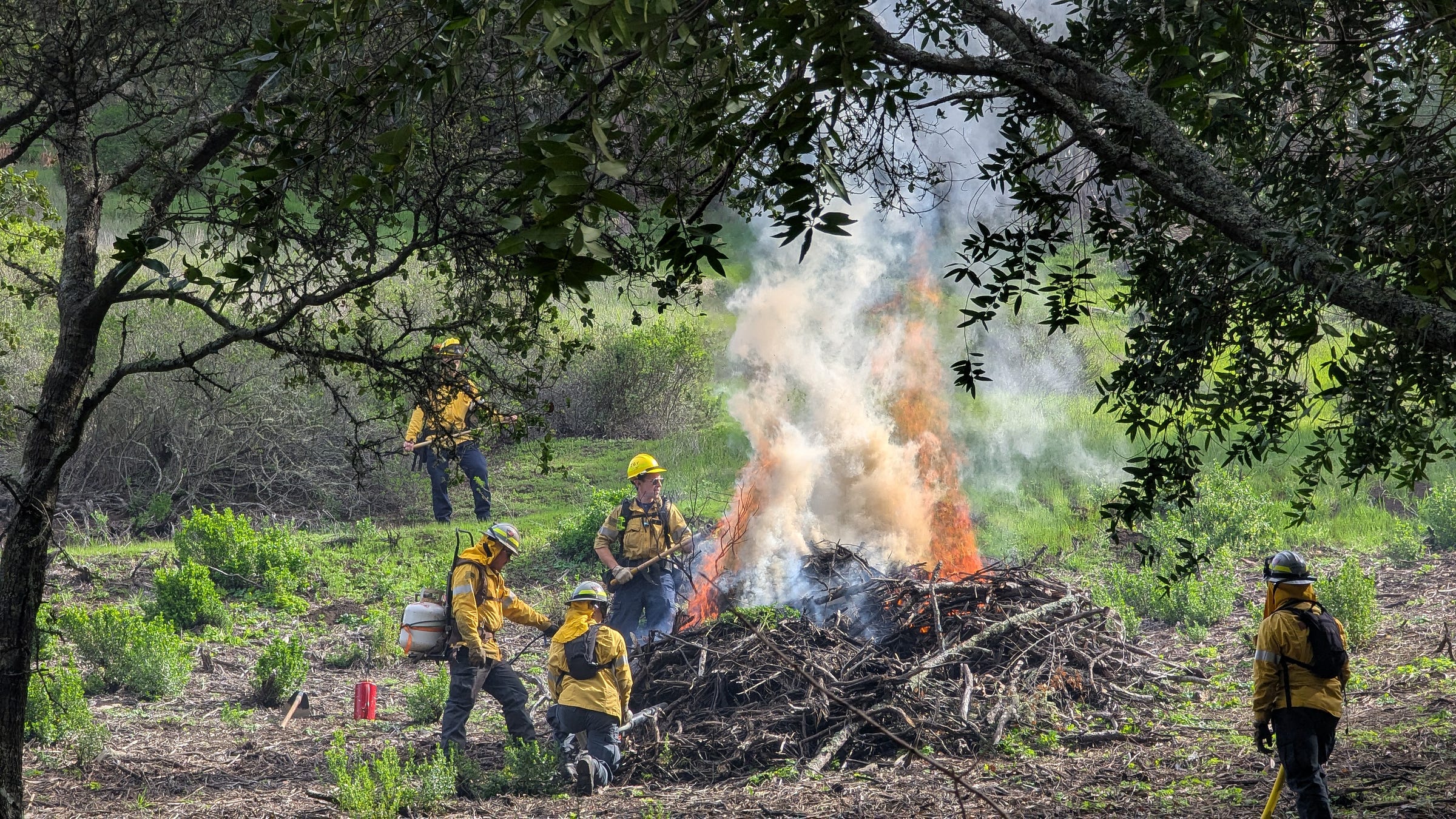
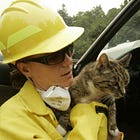
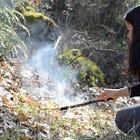


Helluva thing, Amanda! You figured out how to tell this story. Brilliantly!
Knife's edge. Rampant predjudices and the legacy of Smokey Bear. Know nothing do-gooders parading around as if preferential ignorance and ill-informed good intentions somehow come with generous doses of fairy dust and science-defying miracles.
Masterful!
This was a well written and very informative piece. I will share it with many. Thanks again Amanda.
I also recommend the book 1491 by Charles Mann who describes the cultures and environment of the pre-Columbian Americas, and dedicates a good portion to indigenous forest management.